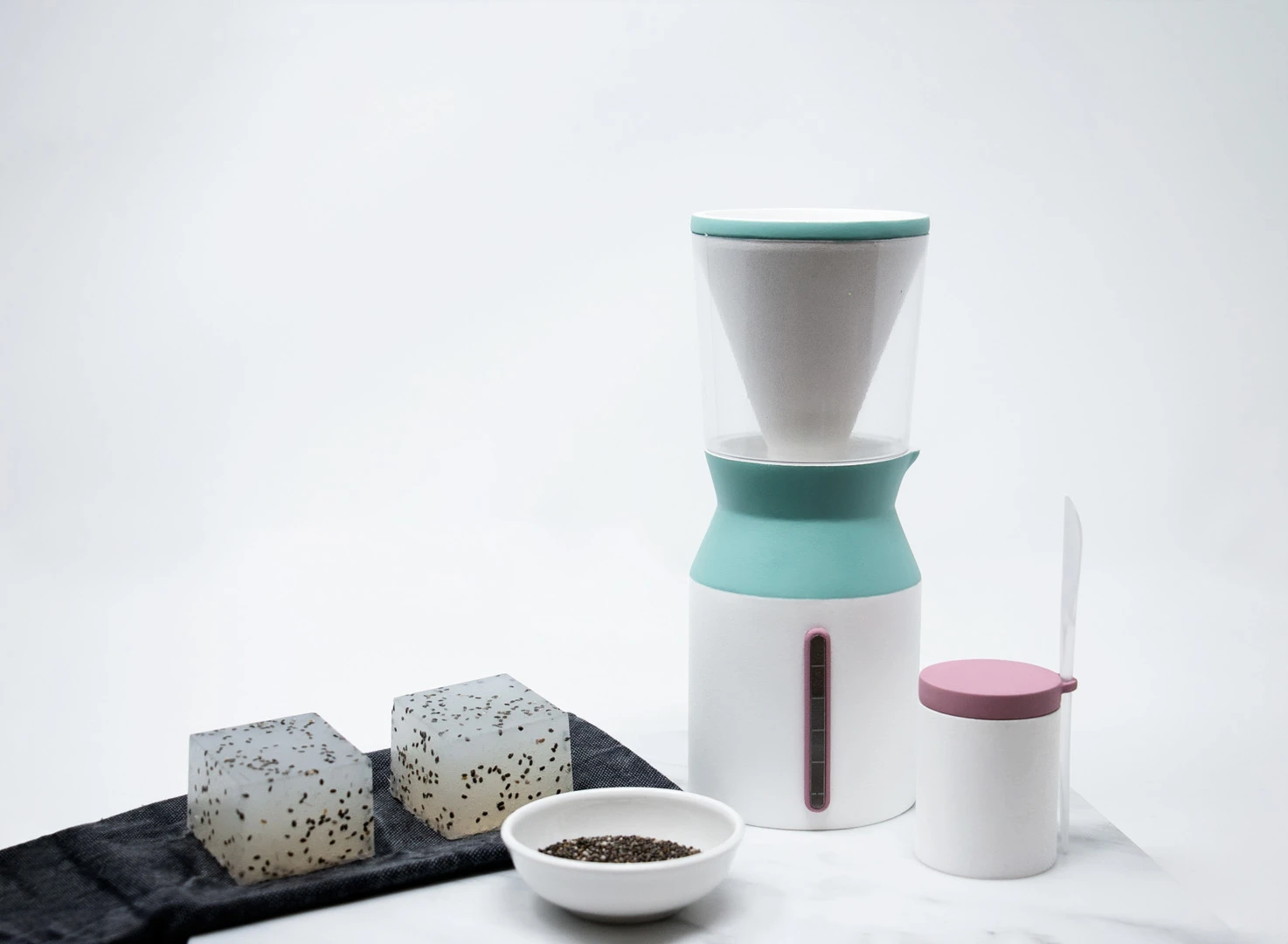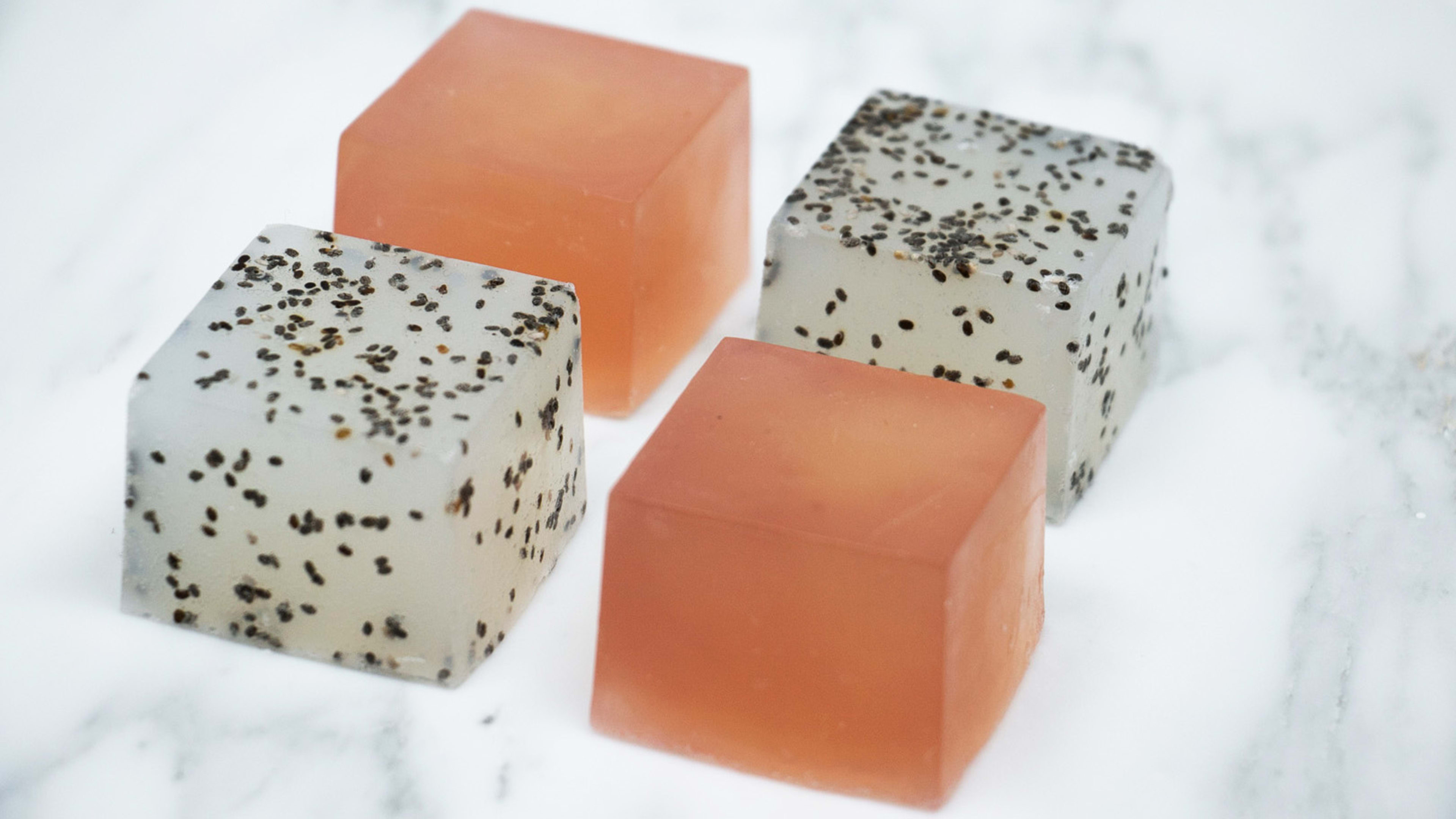In 2017, a 800-foot-long blob of solidified fat, oil, and grease the size of 11 double-decker buses was found inside the London sewer system.
It’s a horrifying thought, but masses of fat like this, called fatbergs, are common in contemporary sewer systems—all because people put leftover cooking fats and greases down their kitchen sink. In the U.K., these solidified fats, oils, and greases cause about 80% of pipe blockages, and in 2016, New York City says that this caused 71% of all blockages. There’s a simple fix: Don’t put fats, oils, and greases (collectively known as FOGs in the biz) down the drain. Collect them in a jar, and throw them in the trash instead.

But what if instead of collecting those FOGs in a jar and then throwing them away, you could give them another chance at life? That’s the idea behind a new project from industrial designer Danielle Coffey. She has created a kit that provides an easy way to turn all those gross cooking oils into something productive: soap.
If that sounds disgusting, you’re not alone. Coffey designed the system with a biodegradable filter. You pour your used cooking greases into the top of her device, where it drains through a filter that catches all the tiny food particles (the filter can then be composted). She says that’s enough to remove the smell—though there might be a psychological blockage for users.
Coffey initially tested the product, called Sápu (which means soap in Icelandic), with a range of users: a group of students, a young person living alone, and an older couple. Their first reaction? Disgust. “Everyone goes, I don’t want that as a soap,” Coffey says. But when she showed them the soaps she’d already made with her own waste oils from cooking, which smelled nothing like cooked food, they were convinced to try it out for themselves.

The reason Coffey’s soap doesn’t smell? She designed a biodegradable filter into Sápu that catches all the tiny food particles as you pour your used cooking greases into the device. It works like this: Once you’ve filtered the fat, it drains down into a mostly opaque jar, making the product visually appealing enough to sit right on the kitchen counter. There’s a small window through which you can see the grease adding up, with a ruler embossed onto the surface to show how much more you oil you need to start making soap. When you do collect enough (about 3.4 fluid ounces for a single bar), the Sápu kit guides you through how many spoonfuls of water and lye you need to add to the oil to transform it into soap. Lye, which is a chemical that creates a reaction between the fat and water, is very dangerous to handle because it causes burns if it comes in contact with the skin. That’s why Coffey designed a special child-safe container similar to a medicine bottle that’s separate from the filter and collection jar—you’re supposed to put it on a top shelf so no one inadvertently hurts themselves.
This process might be too intimidating for some, especially given how dangerous lye can be. But Coffey’s genius is turning the process into a user-friendly kitchen appliance that appeals to people who might be willing to try—something that makes it simple to change their behavior.
Once they’ve added the ingredients together, users can then add their own fragrances or exfoliators—Coffey likes to add chia seeds and a few drops of aloe essence. You pour the mixture into the kit’s molds and leave the bars to dry for about an hour. It’s that easy to transform a waste product into something that’s actually useful to your life. Plus, it saves you from having to buy mass-produced soap, cutting down on waste in yet another way.
Sápu, which was Coffey’s undergraduate thesis at Northumbria University, began with a prompt from the U.K. retailer John Lewis’s innovation lab. The organization asked the university’s design students to find ways to reuse elements of the urban environment. Coffey, who’d worked with Northumbria’s water utility in her previous career in nonprofits, learned that the utility was trying to find ways to convince consumers to take a more active role in preventing pollution in the local water supply. She learned about the threat of FOGs and fatbergs and started looking into alternative ways that consumers could use the fats they had been thoughtlessly putting down the drain.
There are more industrial uses for fats, like in making detergent or even clothes, but these require collecting fats from many different households to obtain enough volume. Coffey settled on soap because it’s simple and practical to make. “There is another life there in these oils, and it’s a shame to just throw them down the drain and cause more damage in the water system when you could be repurposing them into something that every household uses,” she says.
Coffey has been approached by multiple companies and is hoping to commercialize the product (it’s not currently available for purchase). For anyone who cares about reducing their personal impact on the environment, turning all that nasty grease into soap can help—if you can get over the initial ick factor.
“A small change like this isn’t making people go out of their way in their daily lives,” Coffey says. “It’s taking a small element out of our water systems that will really help in the long term.”
Recognize your brand’s excellence by applying to this year’s Brands That Matter Awards before the early-rate deadline, May 3.






